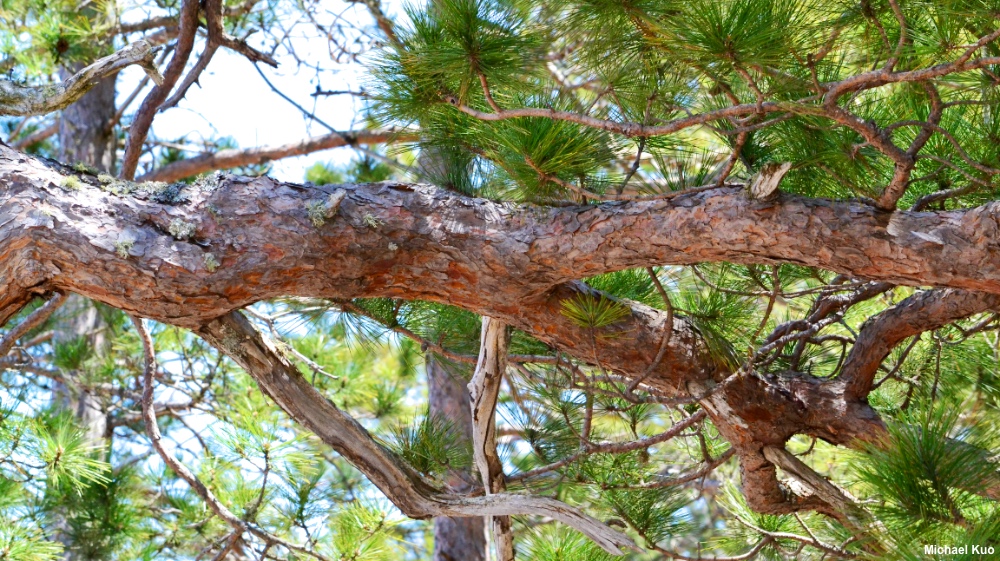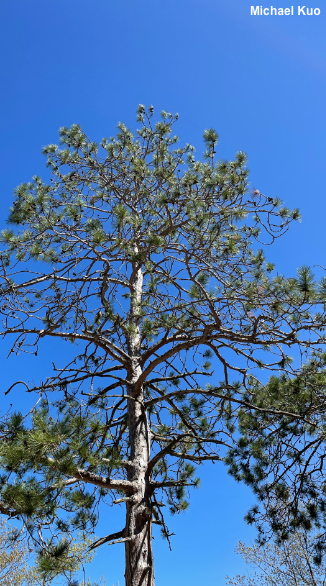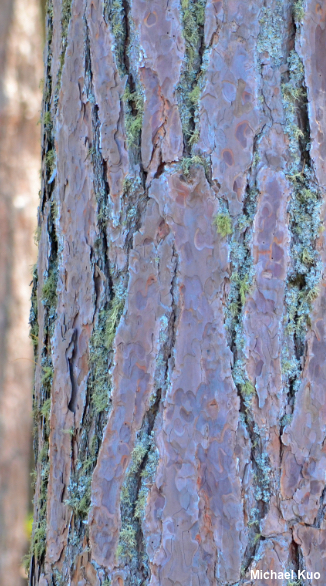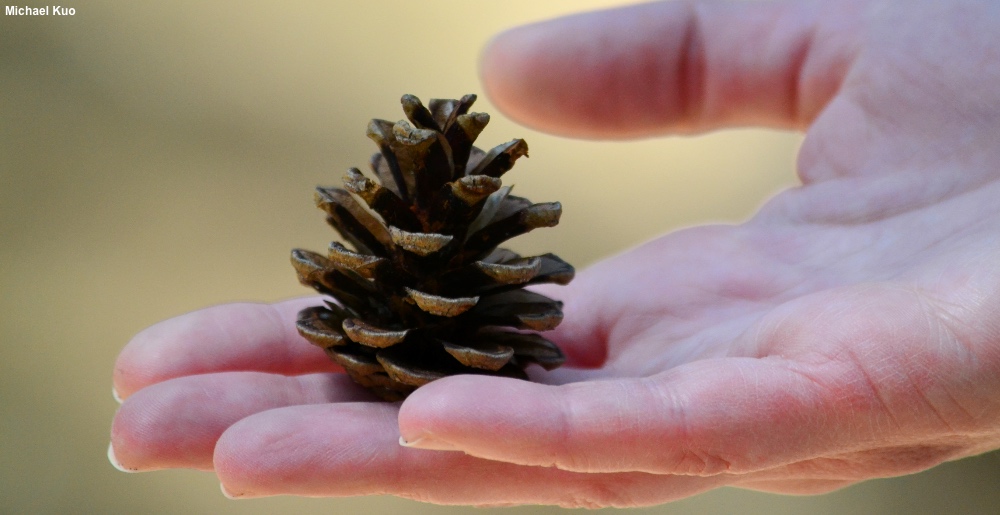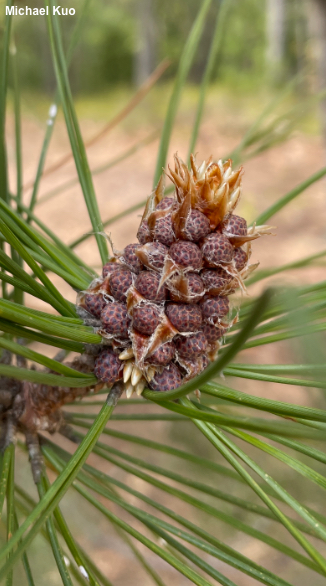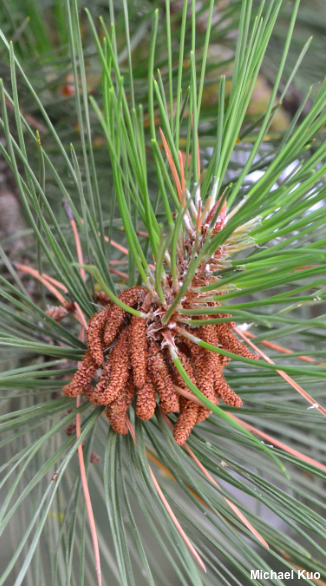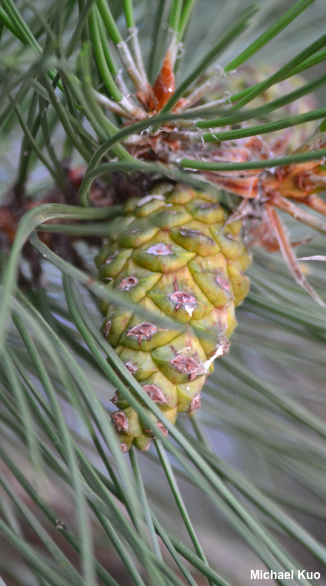 Pinus resinosa (red pine) |
|
Red pine is recognized by a combination of features: the stiff needles, which are bundled in twos and average around 5 inches in length; the small, roundish cones; and the gorgeous mature bark, which features plates of orangish red. The natural range of red pine is a fairly narrow band, the center of which is made up of the Great Lakes and the St. Lawrence seaway, but the tree is often found in plantations well out of this range, from Kansas to southern Illinois and the Appalachians. Mushrooms commonly encountered in association with red pine include: Amanita muscaria guessowii; Callistosporium luteo-olivaceum; Cortinarius species; Entoloma vernum; Gyromitra korfii; Gyromitra perlata; Hydnellum species; Hypholoma capnoides; Inocybe species; Laccaria proxima; Lactarius chelidonium; Marasmius pulcherripes; Mycena species; Pycnoporellus alboluteus; Russula species (including R. sanguinea); species of Suillus (including S. acidus, S. brevipes, S. luteus, and S. subalutaceus); Tricholoma magnivelare; Tricholomopsis rutilans; and many others. |
|
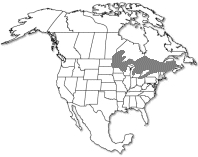
|
|
|
|
|
|
|
|
|
|
|
|
|
|
|
|
Kuo, Michael (July, 2025). Pinus resinosa (red pine). Retrieved from the MushroomExpert.com website: www.mushroomexpert.com/trees/pinus_resinosa.html All text and images © , mushroomexpert.com. |
